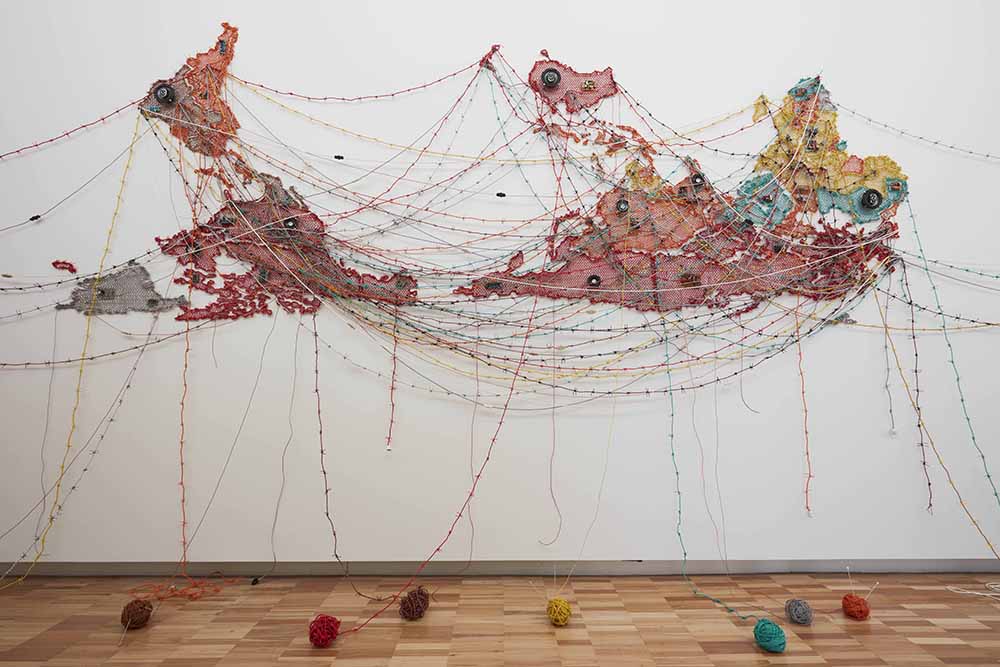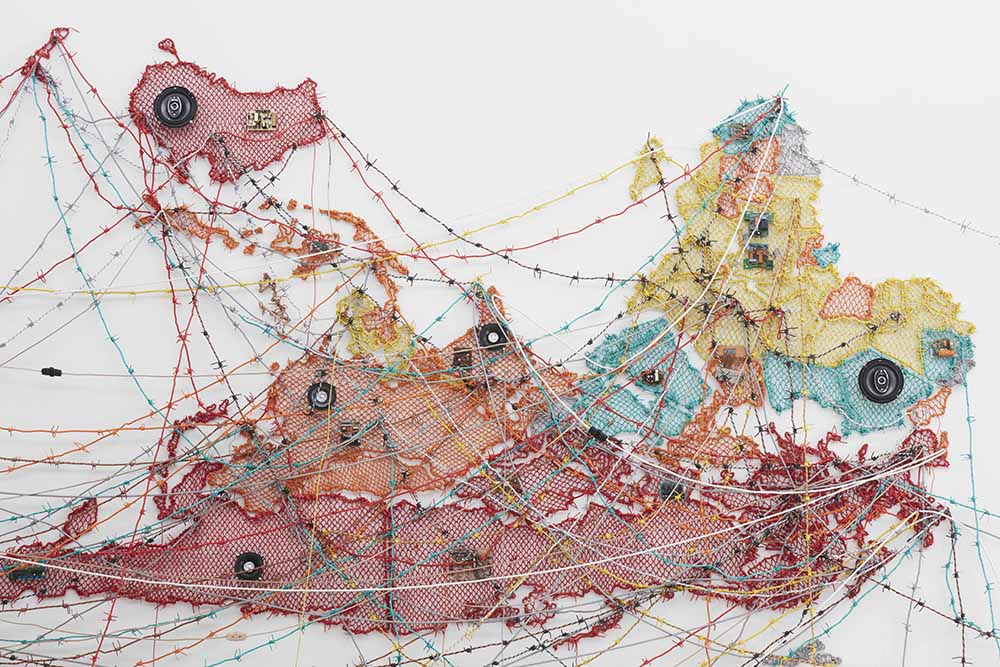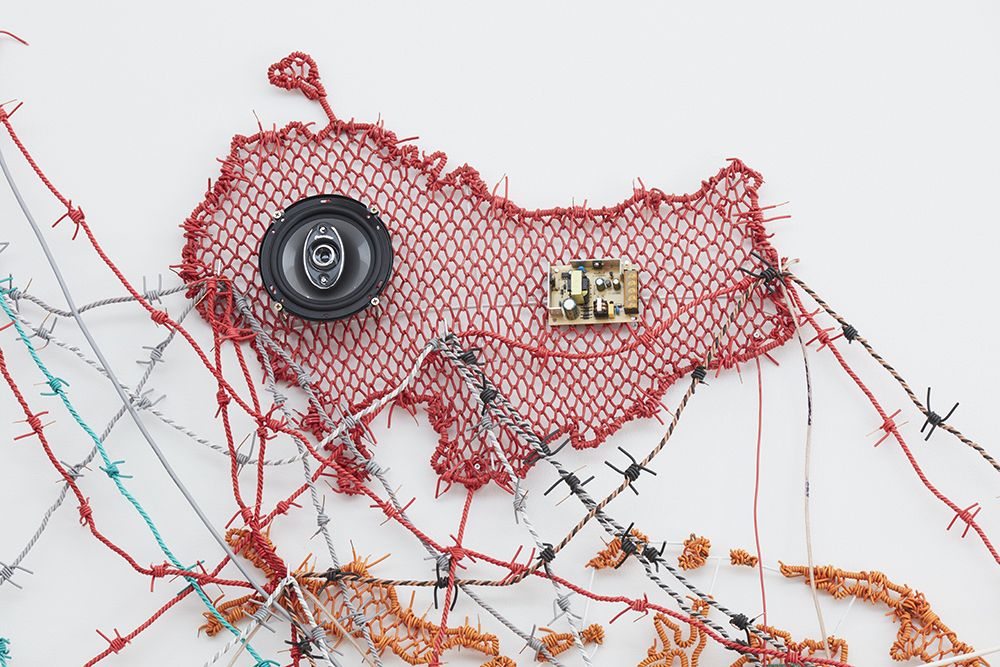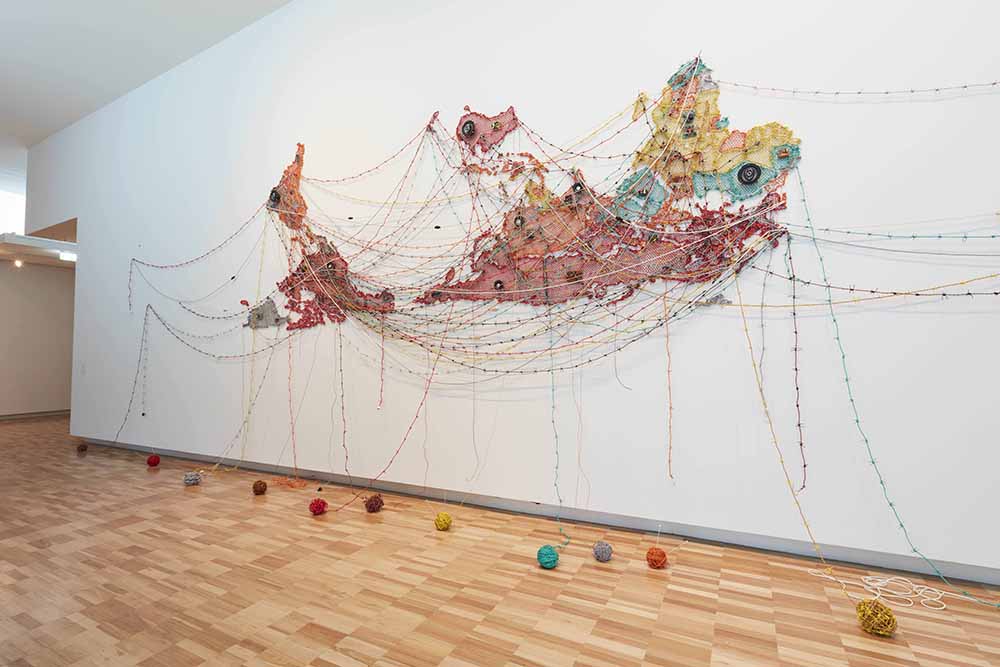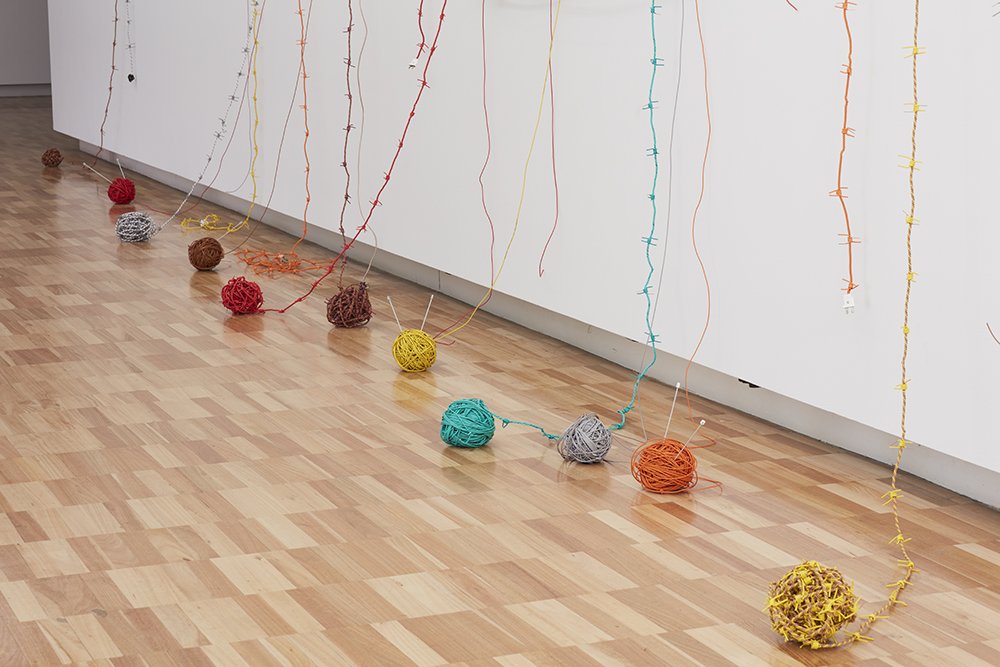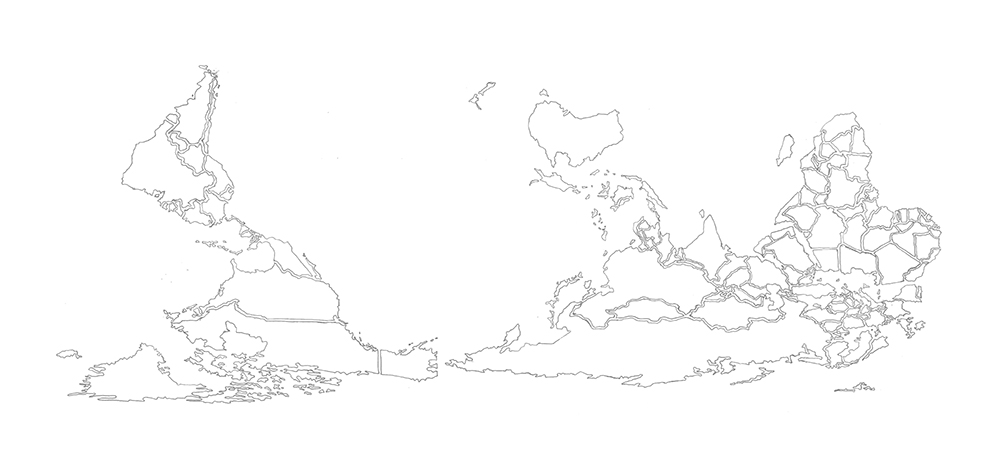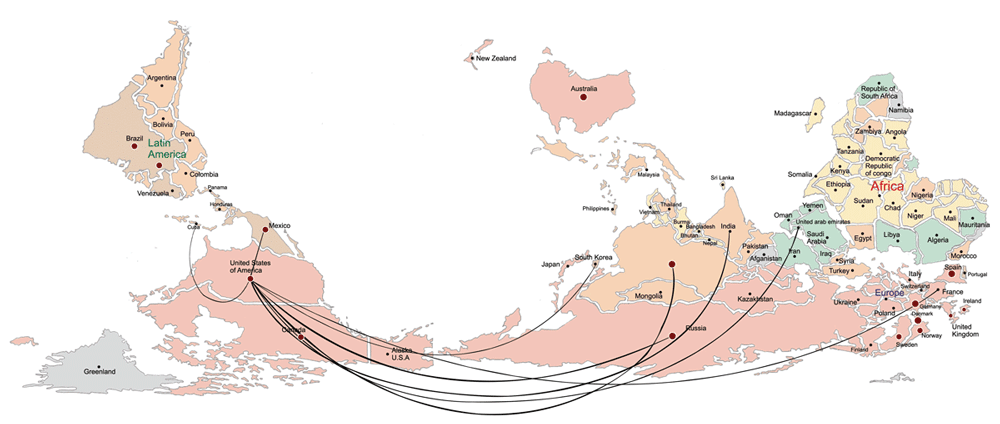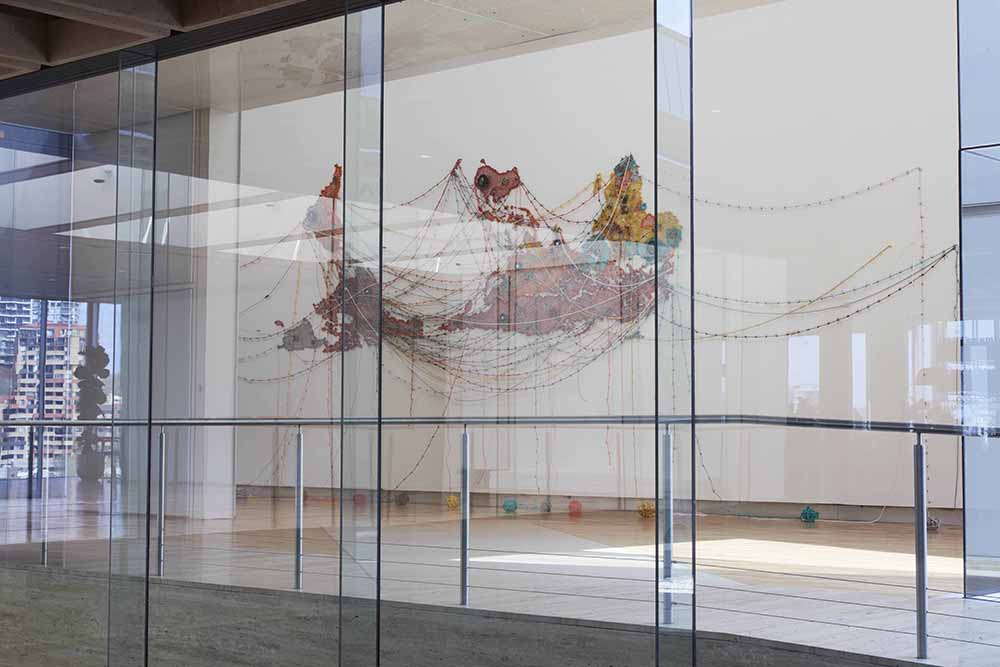
Woven Chronicle
2018
circuit boards, speakers, electric wires and fittings
single channel audio (10 min.)
144 x 504 x 24 in. l 366 x 1447 x 61 cm.
Map orientation is completely arbitrary since travelling through 3-dimensional space there is no reference of up or down, considering the earth is a spherical body. Yet how we decide to map the world in 2-dimensions has very real consequences for how we think about it. Early Islamic maps favoured south at the top as most of the early Muslims cultures were north of Mecca, so they imagined looking up (south) towards it. Christian maps from the same era (called Mappa Mundi) put east at the top, towards the Garden of Eden and with Jerusalem in the centre. During the age of exploration, European cartographers followed the north-up convention since the North Star was their fixed reference point for navigation.
Complex politics of map-making over time and the inertia of convention, the north-up, Atlantic-cantered Mercator projection is the most prevalent, making it not only a navigational tool but also the image of the world in our mind’s eye.
Ideas of movement, displacement and change are present in Reena Saini Kallat’s ‘Woven Chronicle’, an installation that traces migration routes taken by groups of people, from indentured labourers to professionals. The work is made from electric cabling and visually references barbed wire, becoming both a reminder of impenetrable fences, borders and a symbol of connectivity. Kallat’s map of the world is positioned ‘south up’ to shift the psychological perspective expressed in maps where the north is usually dominant forcing us to view the world differently.
